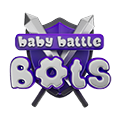With the rise of cryptocurrencies and blockchain technology, the industry is receiving frequent updates. This includes third-generation cryptos and blockchains that are addressing some of the limitations seen in Bitcoin, Ethereum et al. What exactly does this latest generation offer? And which blockchains today make up part of it? Let’s explore what ‘third generation cryptocurrencies’ really mean for crypto markets as we take a peek inside these advanced solutions supposedly tailored to address all those pesky issues from yesteryear.
Third-generation cryptocurrencies are built to be more efficient, scalable, user-friendly and secure than previous versions. They provide services that can not only store digital currencies but also enable blockchain-based applications such as Smart Contracts, decentralized finance (DeFi) projects, Non-Fungible Tokens (NFTs), and even fully autonomous AI-based decentralized governance systems.
Proof of Work Consensus Algorithms
Proof of Work (POW) algorithms has been replaced by more advanced and energy-efficient algorithms, such as the Delegated Proof of Stake (DPoS) algorithm. This new algorithm allows users to stake their digital coins and be rewarded in the form of dividends.
Despite the financial benefits of mining Bitcoin, this activity is drastically unsustainable due to its yearly electricity usage alone – greater than that of a whole country! Fortunately, there are numerous solutions being released or already implemented which provide more environmentally-efficacious methods for successfully obtaining it.
Third Generation Cryptocurrencies Projects
Notable third generation cryptocurrencies include Cardano, Polkadot, EOS, Tezos and NEO. All these platforms are built to be more scalable and efficient than their predecessors.
Cardano (ADA)
Cardano is a third-generation cryptosystem that is designed to be the most advanced blockchain platform built using scientific principles. Powered by its own native token ADA, it allows users to store, send and receive digital assets in a secure and decentralized manner.
Polkadot (DOT)
Polkadot is an open-source protocol for connecting disparate blockchain networks. It allows users to exchange tokens and send messages across different blockchains, all while maintaining the security and trust of the underlying blockchain networks.
EOS (EOS)
EOS is a third-generation blockchain platform that enables developers to build decentralized applications (DApps). It allows users to create, deploy and manage smart contracts without third-party interference.
Tezos (XTZ)
Tezos is a third-generation blockchain platform that allows users to create and run their own decentralized applications (DApps). It has a unique consensus algorithm which allows users to validate transactions and reap rewards.
NEO (NEO)
NEO is a third-generation blockchain platform that is designed to allow developers to quickly and easily create their own digital assets and smart contracts. It uses a unique consensus algorithm that allows users to validate transactions in an efficient manner.
Conclusion
In conclusion, third generation cryptocurrencies are designed to be more scalable, energy efficient and secure than its predecessors. They allow users to stake their coins and build decentralized applications with the help of Smart Contracts. Well-known third generation projects include Cardano, Polkadot, EOS, Tezos and NEO. With more third-generation cryptos being developed every day, this new era of blockchain technology looks set to revolutionize the world economy.

